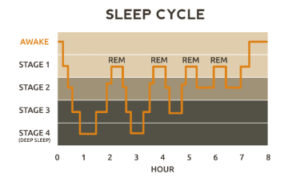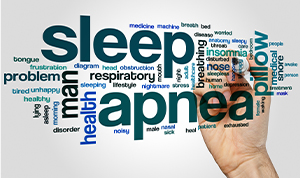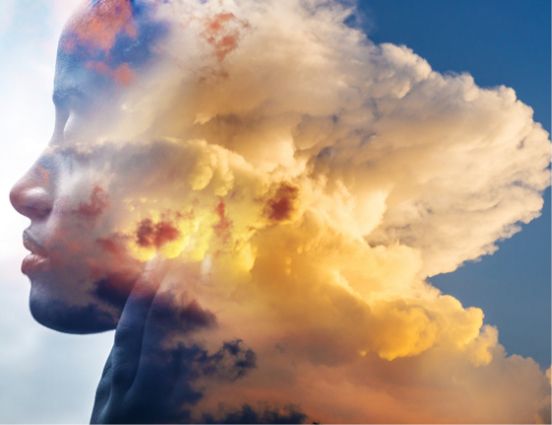As we live through a global pandemic, each morning we awake to remind ourselves this is not a science fiction movie, but rather a significant, and very real historical event. The scope of which will be recounted in history books for centuries and told to children for generations to come. Each day, we experience moments that are odd, peculiar, even tragic ranging from: rising death counts, press conferences from experts and leaders, new PPE fashion updates, 7pm praises for healthcare workers, and empty streets of landmark cities worldwide. We quickly acquired a new vernacular: PPE (Personal Protective Equipment), alone together, flatten the curve, social distancing and shelter in place, to name a few. A flurry of emotions has taken the whole world by storm. So, how does our unprepared mind, grapple with all these changes affecting the bedrock of our human matrix? Crazy, weird dreams: Why do they happen, who is having them, and what do they mean?
Even though we are not all on the frontlines, we still struggle with insecurities, hopes, and fears of great magnitude. The reality of unexpected job insecurity, financial losses, physical separation, fear of contagion, powerlessness, and loss of loved ones is certainly more than we bargained for as we rang in the New Year. The content of dreams is certainly a reflection of these emotions. Crazy, weird dreams are laden with symbolism as the brain defragments our hard drives, resolving problems within the safety of our subconscious.
How Does Coronavirus Quarantine & Shelter at Home Affect Our Dreams?
The majority of Rapid Eye Movement dream sleep happens at the end of sleep in the early morning, when REM sleep periods may be as long as an hour. During periods of prolonged isolation, many people find themselves getting more sleep time, and more time to ruminate on their dreams when they wake up. Taken together, more sleep time means we are dreaming more, and having more time to think about those dreams as we wake, improving dream recall.

Research confirms that sleep is restorative and our ability to dream correlates with our well-being while awake.1 With hundreds of millions of people sheltering at home, we are in withdrawal from real life stimulation and experiences. Our subconscious mind is struggling to find inspiring stimuli. Depending on our emotional state, our subconscious may look positively into our past treasure trove or negatively into our locked up pandora’s box in unprecedented ways.
People on the frontlines, or those with afflicted loved ones, may experience vivid content more in line with realistic dreams, such as being alone in an emergency room teeming with sick COVID-19 patients screaming for help, or dreaming of a loved one struggling to breathe. Those in quarantine may experience cabin fever dreams, like being in a baseball stadium full of people, and realizing they forgot they weren’t supposed to be there infecting everyone. Paranoid dreams are common, such as mobs of people taking off their masks and running to contaminate you, while you are trying to social distance. Others are more symbolic, like dreaming of maggots or worms representing death, or swarms of flying bugs representing fear of getting infected by the “bug” or the countless infectious respiratory droplets around you. Yet some experience somatic dreams, like being unable to remove a tight choker necklace as you can’t breathe, or feeling painful spasms as a worm travels through your bowels, both resolved without symptom upon awakening. Still others report prophetic dreams, such as predicting that a loved one is sick. Many report nonsensical dreams, like fragmented vivid imagery or plots that don’t quite make sense together. While some of the above may represent uncomplicated coronavirus anxiety dreams, others may end with the full-fledged nightmare, leaving you wide awake, heart racing, in a pile of sweat.
Can having Coronavirus dreams be an advantage?
Dreams are really our thinking in a different, safer biochemical state. Deep sleep helps us process facts and skills and strengthen our memories. REM sleep is when those memories get sorted out in creative and poignant ways finding solutions to help us process the data.
I think we have all experienced the benefits of that old adage “let’s sleep on it.” So what happens when we sleep that gives new perspective to problems that seemed nearly insurmountable the night before?
The part of the brain that secretes the stress chemical, norepinephrine takes a break during REM sleep. Dreaming gives us a chance to replay the events of the day in this safe zone, exploring our emotions while dampening our reactivity to an upsetting stimulus. In fact, studies have shown that individuals who reported more fear‐related emotions in their dreams, had better well-being and stronger fear inhibition while awake.2
So, for some, Coronavirus dreams are a healthy coping mechanism to make sense of their emotions. For those not severely traumatized, the good news is the coronavirus dreams will gradually diminish as the threat dissolves.
The Science of Dreaming

The fascination with dreams is nothing new. Good quality sleep is typically divided into recurrent cycles of REM and non-REM phases of sleep, and it’s important to get a sufficient amount of each. Non-REM sleep ranges from easily arousable, light sleep to the slow wave, restorative deep sleep we all crave. About 90 minutes after the start of sleep, REM sleep will begin. During this time, heart rate and respiration accelerate and brain activity measured by EEG increases.
From research on psychedelic drugs, we know that this REM dream state activates nerve receptors called serotonin 5-HT2A, creating a state in which emotions flood our subconscious. During dreaming, neurochemicals turns off the rational part of the brain, called the dorsolateral prefrontal cortex, and results in a state of uninhibited emotions.3 At the same time, we become atonic or paralyzed, so we don’t act out our dreams and hurt ourselves in the process.
How about people who say they don’t dream, could that be true?
While there is a portion of the population who are REM-sleep deprived, this is not the norm for the proclaimed “non-dreamer.” Many people who say they don’t dream, just don’t experience what’s called “dream recall.” In healthy individuals, REM usually makes up 20-25% of our sleep. People who awake feeling refreshed and are experiencing good quality sleep, always dream. They just might not remember any of them.
Research has shown that dream recall varies from person to person and strategies to improve dream recall can be learned. Studies on personality types of dream-recallers suggest those minds are more focused on paying attention to their thoughts, and are more likely to engage in daydreaming and creative thinking. From a different perspective, abrupt disruption of sleep like ringing alarm clocks, alcohol or drug use, awakening from sleep apnea, or a nightmare can also interrupt a dream and result in dream recall.
What happens when dreams become pathologic?
 Nightmares may reflect anxieties that we feel or unknowingly suppress while awake. It is important to understand that experiencing fear in dreams, even the occasional nightmare, is associated with a more adaptive advantage in terms of emotional regulation, often improving our ability to cope with threatening situations in real life.2 However, recurring or frequent bad dreams may indicate a number of pathologic findings: including PTSD (post-traumatic stress disorder), obstructive sleep apnea and upper airway resistance syndrome.
Nightmares may reflect anxieties that we feel or unknowingly suppress while awake. It is important to understand that experiencing fear in dreams, even the occasional nightmare, is associated with a more adaptive advantage in terms of emotional regulation, often improving our ability to cope with threatening situations in real life.2 However, recurring or frequent bad dreams may indicate a number of pathologic findings: including PTSD (post-traumatic stress disorder), obstructive sleep apnea and upper airway resistance syndrome.
Research has also shown that many patients suffering from pathologic nightmares simply have undiagnosed trouble breathing when they sleep. The running theory is that oxygen deprivation to the brain during sleep may cause nightmares as a way to wake up, restore oxygen, and signal to the body that something isn’t right. Leading specialists in the treatment of nightmares, have begun to test patients suffering from pathologic nightmares with a sleep study (polysomnogram testing) to test for sleep disordered breathing. In a recent article in Time magazine, nightmare specialist Barry Krakow reports a whopping 90% of the patients he tested for pathologic nightmares had either full-blown sleep apnea or upper airway resistance syndrome, significantly disrupting airflow during sleep.4 Excessive fatigue during the daytime or recurrent nightmares may be a sign of pathologic sleep issues and further medical evaluation is important.
- 1. Naiman R. Dreamless: the silent epidemic of REM sleep loss. Annals NY Acad Sci 15 August 2017 https://doi.org/10.1111/nyas.13447
- 2. Sterpenich V, Perogamvros L, Tononi G, et al. Fear in dreams and in wakefulness: Evidence for day/night homeostasis. 30 October 2019 Human Brain Mapping https://doi.org/10.1002/hbm.24843
- 3. McNamara P. 5HT2A Serotonin Receptor System in Dreaming. Psychology Today. Feb 15, 2018
- 4. Cloud J. Tuning out Bad Dreams. In Time: The Science of Sleep. May 2020: p. 32-38.

